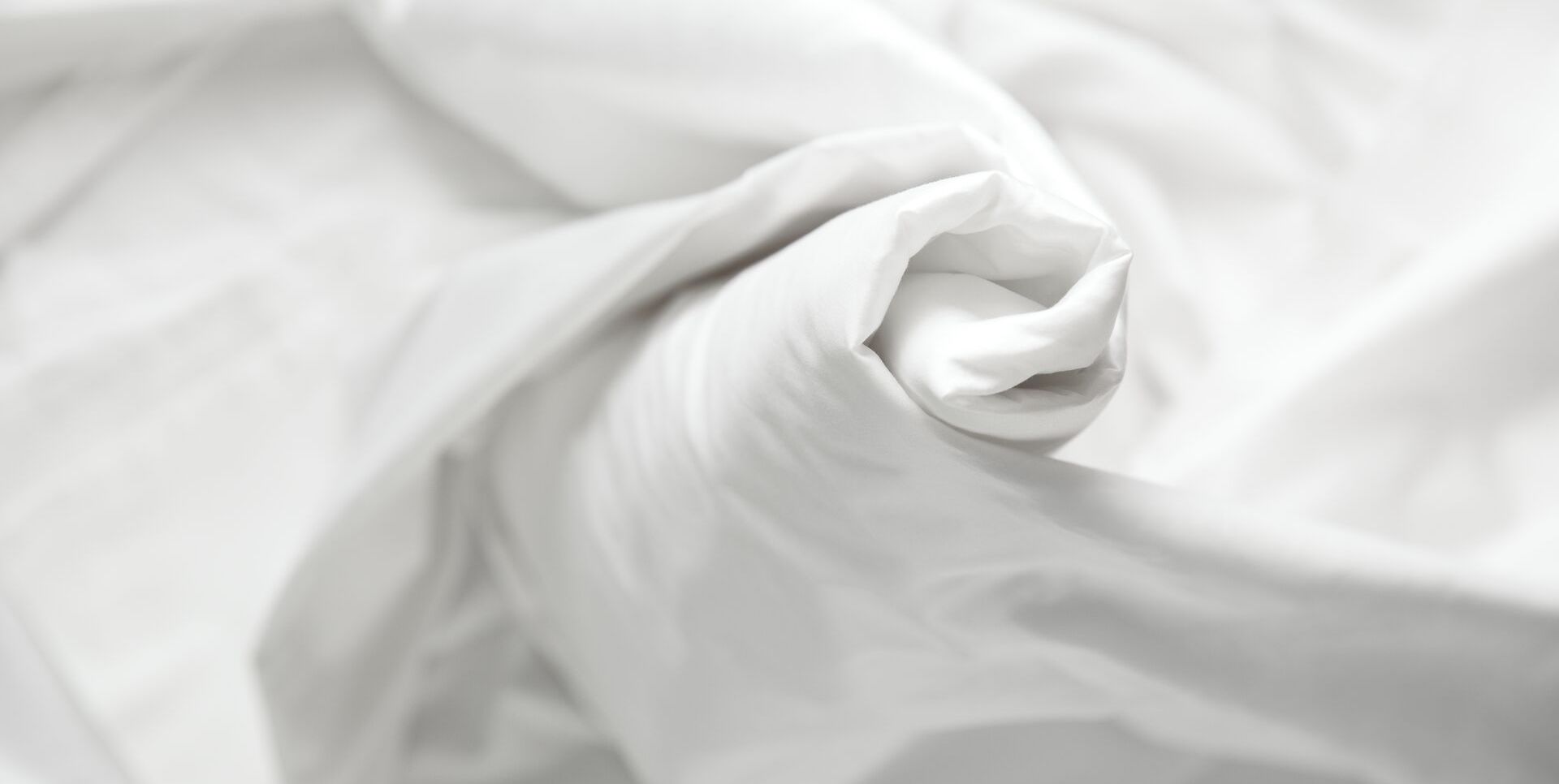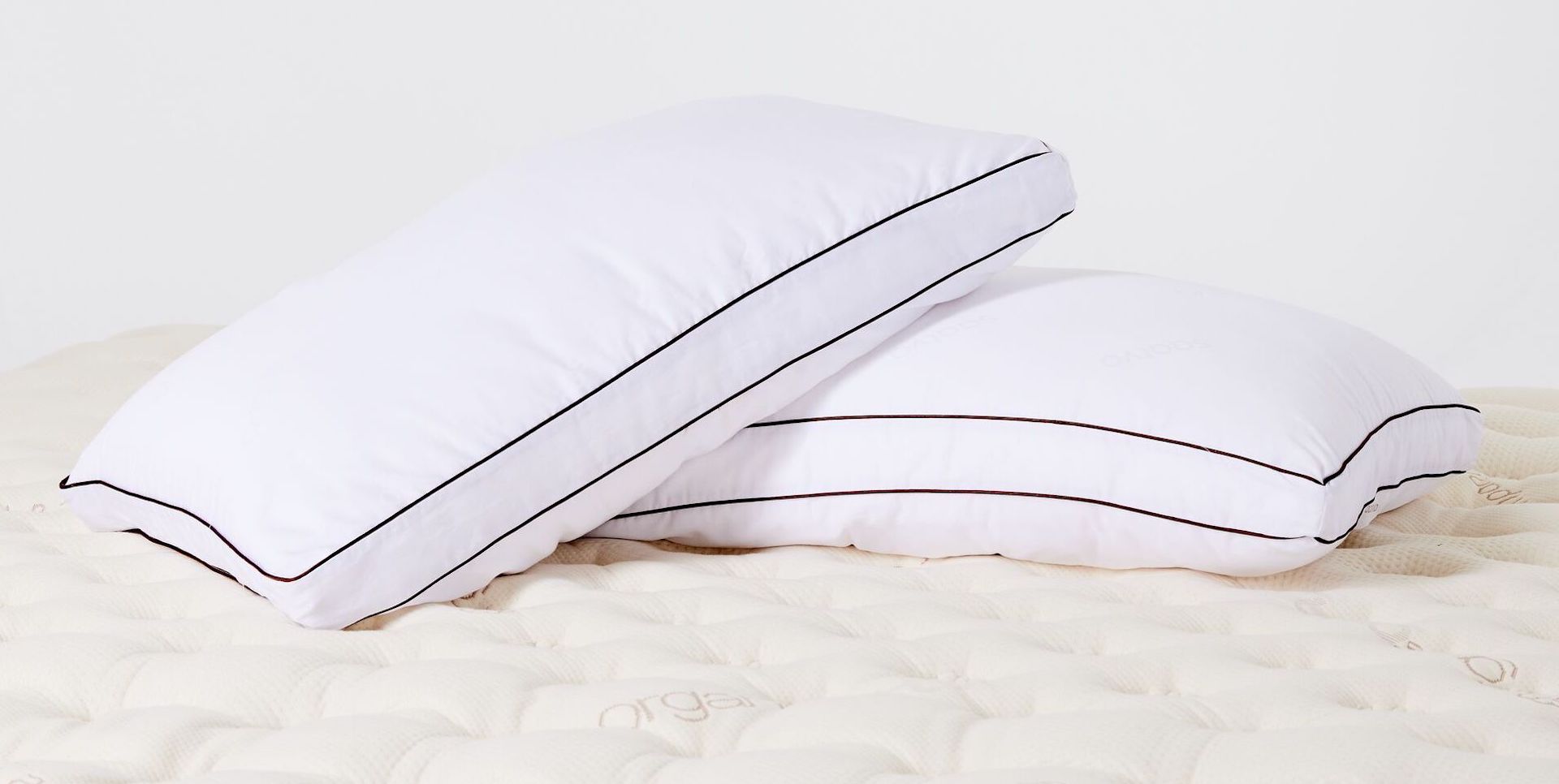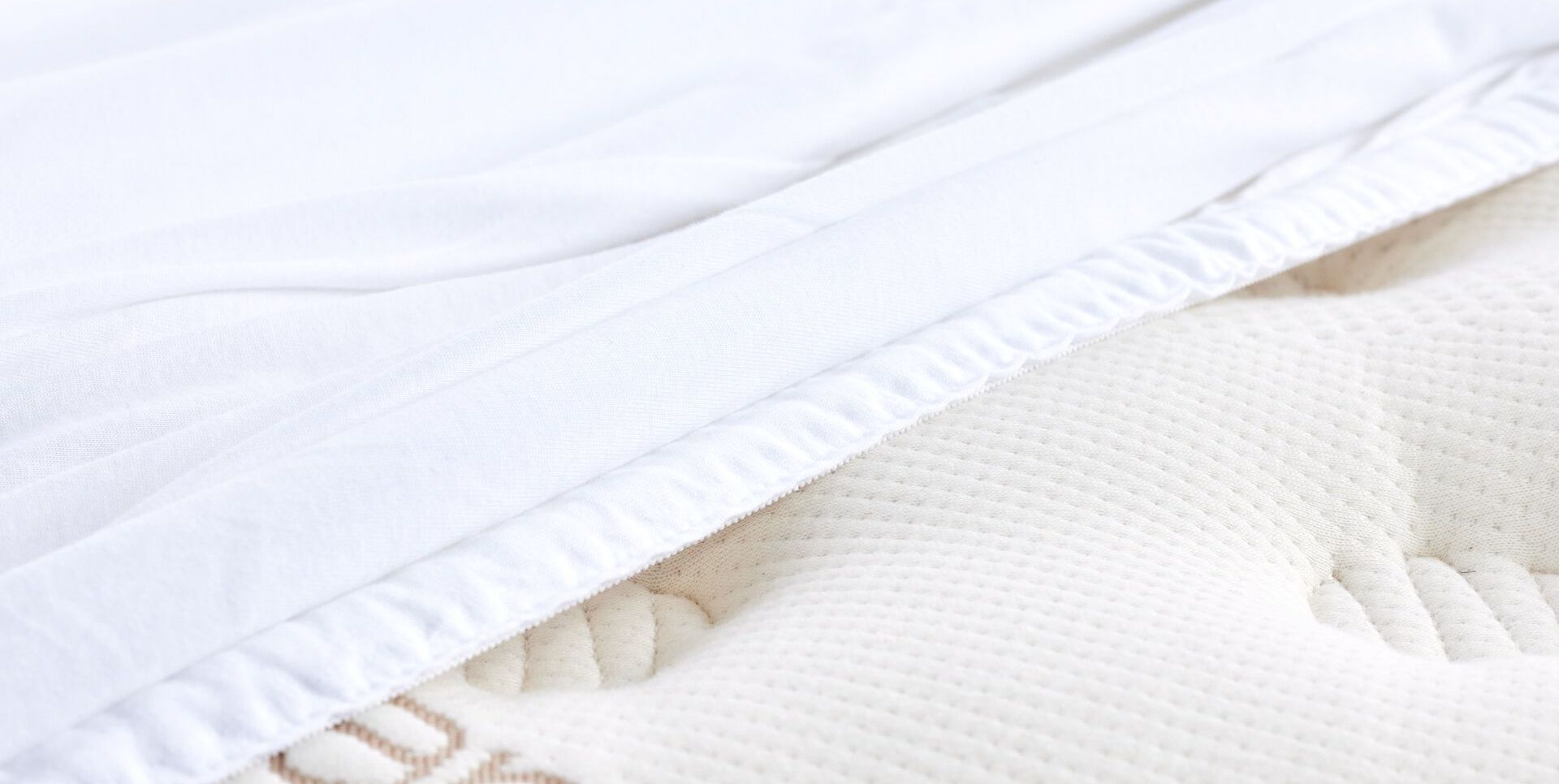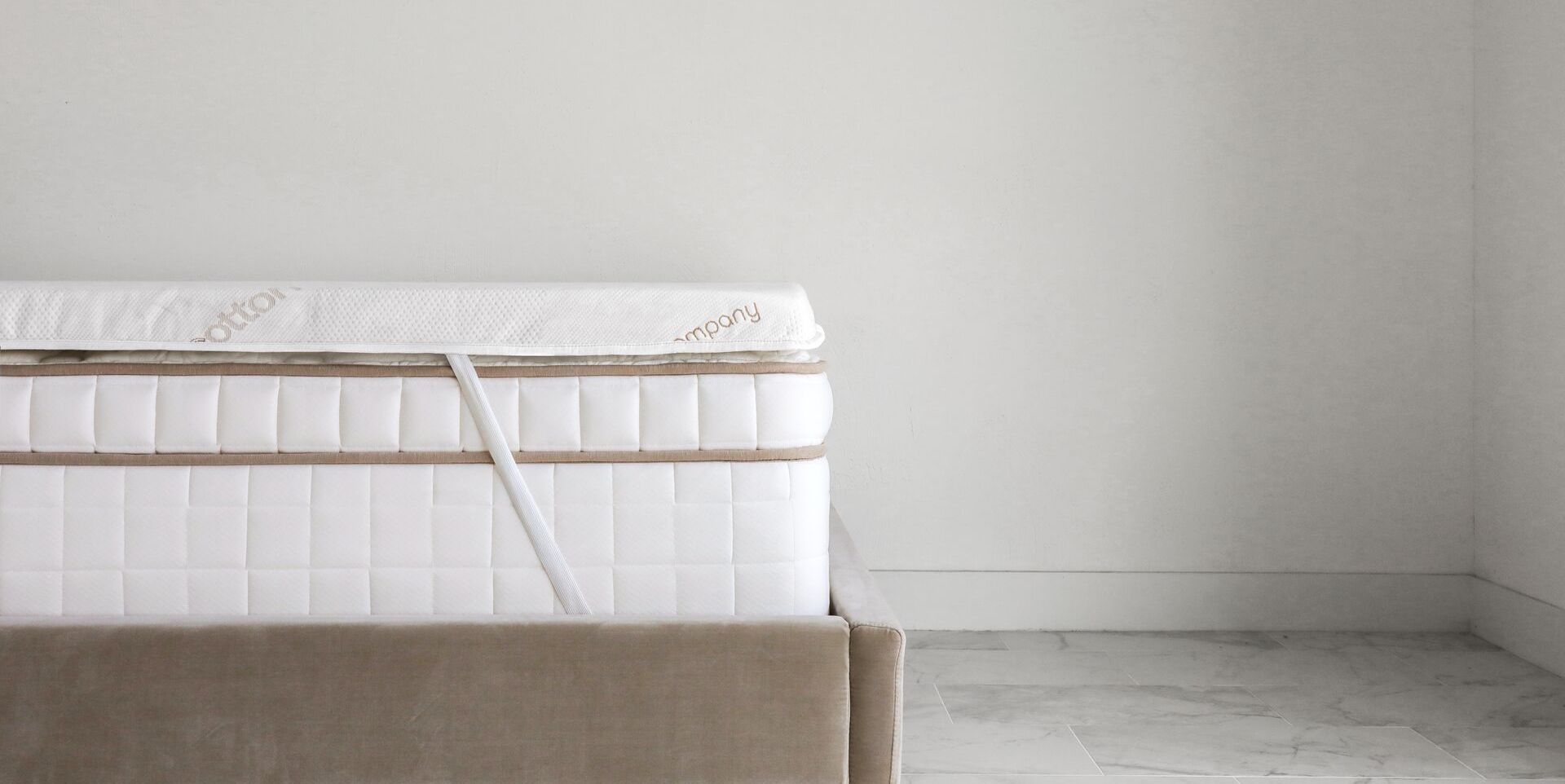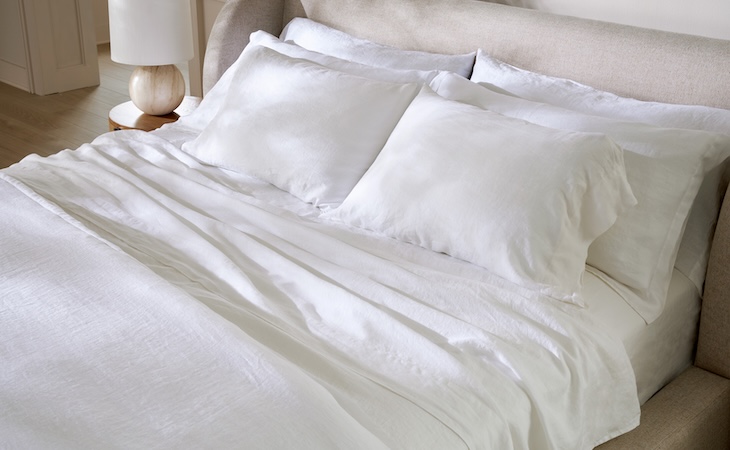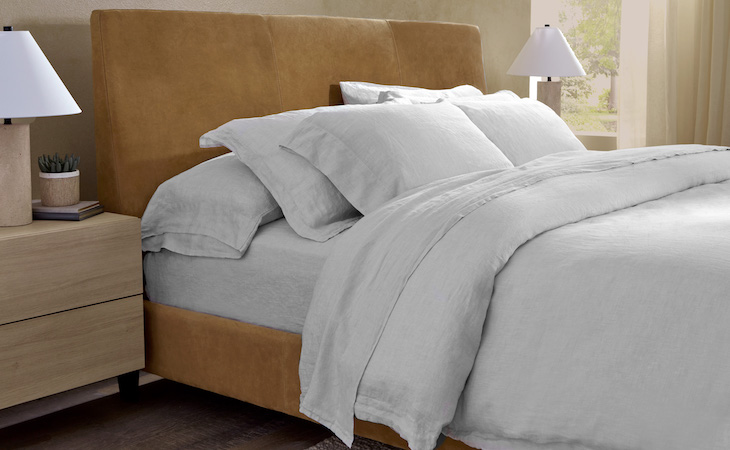Although you can’t see them, germs are everywhere—including in your bedding. Over time, bedding can collect dead skin, dried sweat, and dust. That buildup can lead to fungus, bacteria, and dust mites, all of which can make allergies worse or cause other health issues.
That’s why it’s essential to stay on top of cleaning your bedding. Some items, such as sheets, require more frequent cleaning, while others, like your mattress topper, don’t need to be washed quite as often.
To make things easier for you, we rounded up our best cleaning advice for the most common pieces of bedding. Just remember to always check the care label before getting to work!

Sheets and pillowcases
Frequency: Once a week
How to do it: Many manufacturers recommend washing sheets in cold water, with like colors, on a gentle cycle. That said, if you’ve been sick, you may want to wash your sheets at a higher temp. Research from the American Society for Microbiology finds that washing sheets in 140°F water for 10 to 13 minutes is ideal for destroying bacteria.
Skip the bleach—this can actually turn white sheets yellow and destroy certain fabrics—and reach for a mild detergent instead. Drying sheets on a high heat setting can cause them to wrinkle or shrink, so tumble dry on low. (This is the best way to whiten sheets.)
Related: How to get any stain out of your sheets

Pillows
Frequency: Twice a year
How to do it: If your pillow is made of down or synthetic fibers, you can throw it in the washing machine with a mild detergent and wash it on a delicate cycle. Run pillows through a second rinse cycle to get rid of all the soap and dry on a low heat setting, making sure to check after 30 minutes and every 15 minutes after that until they’re completely dry.
Have a foam pillow? Some manufacturers advise against washing the foam core of the pillow because wet foam can tear. If that’s the case for your pillow, dab dirty spots with lightly soapy water, rinse with a damp cloth, then air dry. If your pillow contains washable foam, soak the pillow in a tub of warm water with a little bit of detergent, squeeze the detergent through the foam, then rinse, squeeze out excess water, and air dry. (Here are more pillow-washing tips.)
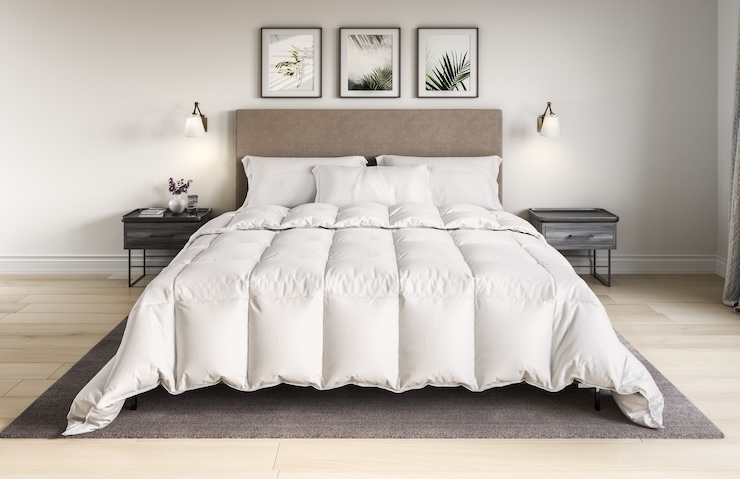
Comforters
Frequency: Twice a year
How to do it: Most down and down-alternative comforters are machine washable—however, a small washer could distort the filling, so your best bet is to bring your comforter to a laundromat where you’ll have access to a larger machine. (Or you could just have a professional wash it to take the hassle out of the process.)
Clean your comforter with a mild detergent on the delicate cycle, then dry on a low heat setting. Throw a couple of clean tennis balls into the dryer with the comforter to help “re-fluff” it while it tumbles.
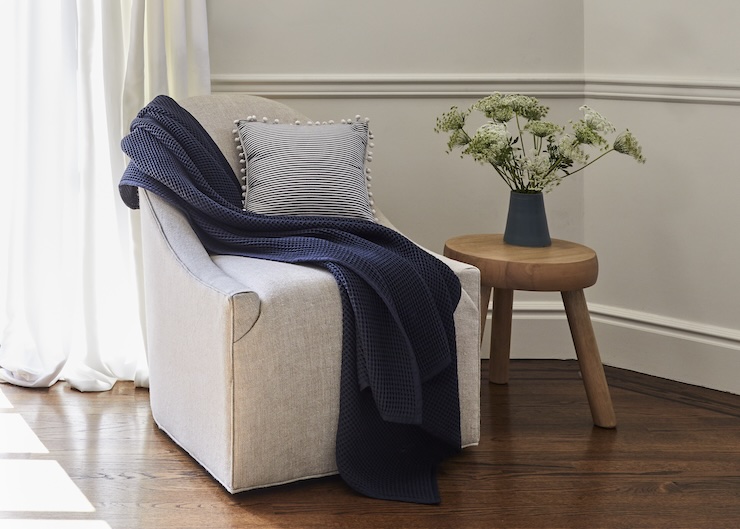
Blankets
Frequency: Once a month for bed blankets; seasonally for throw blankets; once a year for decorative blankets
How to do it: Cotton blankets can usually be thrown in the washing machine. It’s best to machine wash cold with like colors on the gentle cycle. Don’t bleach, and avoid washing with hot water and heavy loads. Then, tumble dry on low.
If your blanket is made from a more delicate fabric, you’ll want to hand wash using a very gentle detergent to avoid ruining the blanket. Always follow the care instructions for best results.

Mattress pads
Frequency: Seasonally
How to do it: A mattress pad’s whole job is to keep your mattress free of spills and stains—which means it could get pretty dirty. Machine wash cotton mattress pads in cold water and mild detergent on the gentle cycle and tumble dry on a low heat setting.
As with a comforter, adding a couple of clean tennis balls to the dryer will help keep the mattress pad fluffy.
Related: Mattress pads: A buyer’s guide

Mattress protectors
Frequency: Seasonally
How to do it: Most mattress protectors are machine washable, but you should always check the care label to be sure. Cotton mattress protectors can be cleaned the same way as cotton mattress pads, but you need to be more careful with vinyl mattress protectors.
Never use bleach on them because this could damage the material. And always dry a vinyl mattress protector on low heat (or air dry it if that’s what the manufacturer recommends) as high heat may also damage the material.

Mattress toppers
Frequency: As needed
How to do it: Mattress toppers are made of foam and therefore very delicate. Avoid putting a foam mattress topper in the washing machine, which could destroy the material. Instead, spot-treat your mattress topper to get rid of stains.
Start by vacuuming both sides of the mattress topper, then apply an enzyme-based cleaner to stains, working from the outside of the stain into the center. Wait 15-20 minutes, then blot with a cool, damp sponge until there’s no more moisture. Air-dry the mattress topper on a flat surface.

Bed skirts
Frequency: Seasonally
How to do it: Although bed skirts don’t get all that dirty, you may benefit from seasonally cleaning yours if you have allergies. If your bed skirt is machine washable, clean it in cool water on the delicate cycle, then tumble dry on low to prevent ruining the fabric.
You can get rid of wrinkles post-washing by ironing the bed skirt according to the manufacturer’s suggestions.
FAQs
What bedding can be washed together?
You can typically wash similar fabrics and colors together. You may be able to put sheets, pillowcases, and cotton blankets into the wash together. Comforters and mattress pads should be washed separately to allow for thorough cleaning. Always check care labels before washing.
How do you clean and disinfect bedding?
Wash sheets weekly in cold water, but use hot water (140°F) if someone is sick to help kill bacteria.
How do you clean different types of fabric?
Cotton bedding can usually be machine washed in cold water on a gentle cycle. Delicate fabrics may require hand washing with mild detergent. Foam mattress toppers should never be machine washed—vacuum and spot clean instead. Vinyl mattress protectors should be air-dried or dried on low heat.
What’s the best way to wash bedding?
The best way to wash bedding is generally to use a gentle cycle with mild detergent and wash similar items together. Avoid bleach as it can damage fabrics. Tumble dry on low heat to prevent shrinking. Always check the care label to follow specific fabric instructions.
You should clean your mattress regularly too. Consult our guide to getting rid of any stain on a mattress to keep yours in tip-top condition.


